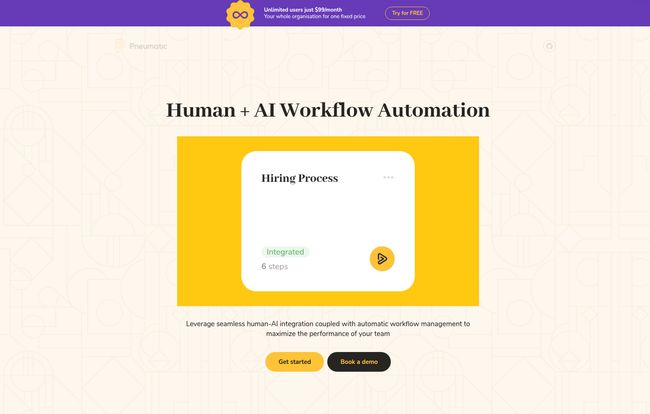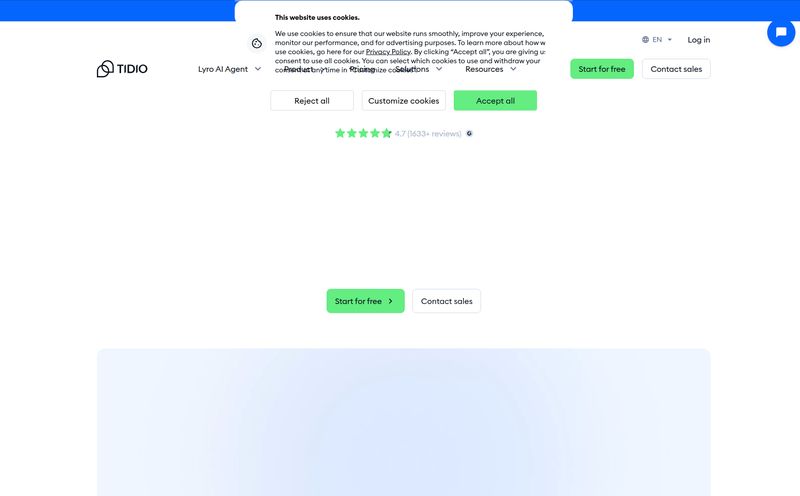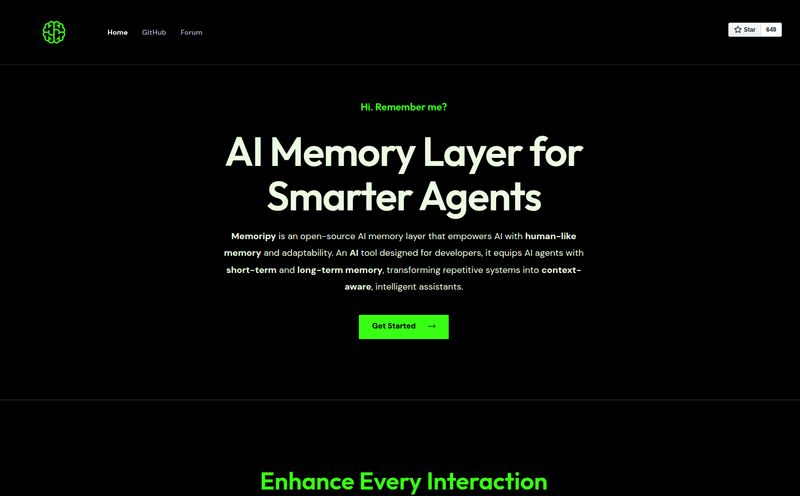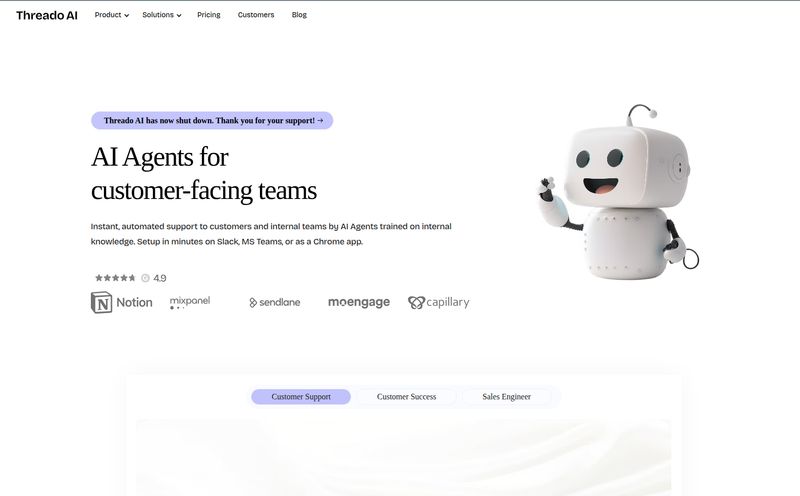How many times have you stared at your project management board—be it Trello, Monday, or Asana—and just felt… stuck? You’ve got all the cards, all the columns, all the colorful labels. But the actual flow of work feels clunky. Tasks get bottlenecked. Simple approvals take days because they land on the wrong person's desk. It’s like having a beautiful, detailed map but no actual engine to drive the car.
I’ve been in the digital marketing and SEO world for a long time, and I've seen teams drown in process management tools that promised the world but just added another layer of stuff to click. So, when I stumbled upon a platform called Pneumatic, my first reaction was a healthy dose of skepticism. “Human + AI Workflow Automation,” the headline read. Right. Another buzzword salad?
But then I looked closer. And folks, what I found was genuinely interesting. This might be one of those rare tools that actually understands how work gets done.
So, What on Earth is Pneumatic?
First off, let's get one thing straight: Pneumatic isn’t just another to-do list app. Calling it that would be like calling a Swiss Army knife a butter knife. It’s a full-blown business process management (BPM) platform. The goal here isn't just to list tasks, but to build, automate, and streamline the repeatable workflows that are the backbone of any real business. Think client onboarding, content approval pipelines, hiring processes, bug reporting, you name it.
What really sets it apart are two things: it’s open-source, and it has this fascinating “Human + AI” integration. It’s not about AI replacing people. It’s about AI acting as the world’s smartest, most efficient middle manager.

Visit Pneumatic
The Magic Trick: Human + AI Synergy
This is the core of Pneumatic and, in my opinion, its biggest selling point. Most automation tools are a bit dumb. They follow rigid “if this, then that” rules. If the invoice is over $500, send it to Jane. Simple.
Pneumatic’s approach is more nuanced. The AI looks at the context of a task. It can be configured to understand that a simple social media graphic can go to a junior designer, but a full brand redesign proposal needs to go straight to the senior art director. It handles the routing and decision-making, ensuring that tasks are assigned to the right human with the right skills at the right time. This frees up your team leaders from having to manually delegate every little thing. It’s less of a robot and more of a helpful, hyper-efficient colleague who never takes a coffee break.
A Look Under the Hood at Pneumatic’s Features
Beyond its core AI magic, Pneumatic has a few other tricks up its sleeve that are worth talking about.
A Workflow Template Generator That Thinks
We’ve all seen template libraries. They’re great, but often generic. Pneumatic’s Workflow Template Generator is a bit different. It’s designed to recognize your specific needs and help you build out the logic for your processes. You start with a template, say, for A/B testing or 5S auditing, and the system helps you customize it to fit your team’s unique quirks. This cuts down the setup time immensely, which is often a major hurdle with powerful BPM tools.
Zero-Code Integrations for a Connected Hub
A workflow tool that doesn’t play nice with others is useless. Full stop. Pneumatic gets this. It offers zero-code integrations with all the usual suspects: Slack, Salesforce, Gmail, QuickBooks, Google Drive, and a bunch more. You can connect it all using Zapier or Make as well. This means you can build workflows that pull data from one system, trigger an action in another, and notify your team in a third, all without writing a line of code. It lets Pneumatic become the central nervous system for your operations.
The Freedom of Being Open-Source
For some, this might not matter. But for tech-forward companies or businesses with unique security and customization needs, this is huge. Being open-source means you’re not locked into a proprietary ecosystem. Your developers can dig in, modify the code, build custom integrations, and host it on your own infrastructure if you want. It provides a level of control and transparency that you just don't get with closed-off platforms like Monday.com or ClickUp.
Pneumatic vs. The Usual Suspects: A Quick Comparison
Okay, so how does this stack up against the tools you're probably already using? The site itself calls out Trello and Monday, so let’s go there.
- Trello: I love Trello for its simplicity. It's a digital whiteboard. Amazing for brainstorming, tracking personal tasks, or managing very simple, linear projects. But when you need conditional logic, automated handoffs, and complex sequences? Trello falls over.
- Monday.com: A big step up from Trello. It's a fantastic project management tool with great dashboards and some decent automation capabilities. But it's fundamentally a project management tool, not a process management one. It's built around projects with a start and end date, not for managing the continuous, repeatable processes that Pneumatic is designed for.
Think of it like this: Trello is a notepad. Monday.com is a detailed project planner. Pneumatic is an automated factory assembly line. They all have their place, but they solve different problems.
Let’s Talk Money: Breaking Down Pneumatic’s Pricing
This is where things get really, really interesting. The pricing model is what initially made me do a double-take.
| Plan | Price | Best For |
|---|---|---|
| Self-serve | $99 / month (billed annually) | Startups and teams of any size who are comfortable with self-setup. The value is incredible. |
| Turnkey | $5,900 / year | Teams that want expert help migrating and launching their processes quickly (8-week setup). |
| Enterprise | Custom | Large organizations needing a fully customized, bespoke BPM system with dedicated support. |
That Self-Serve Plan Deserves a Moment
Seriously, read that again. $99 a month for your entire organization. Unlimited users. In a SaaS world that charges per seat, this is almost unheard of. For a startup or even a mid-sized business, the value proposition here is off the charts. You can bring everyone on board without watching your subscription bill explode. This alone makes Pneumatic worth a look for any budget-conscious team.
The Not-So-Shiny Bits: A Realistic Look
No tool is perfect, and it would be dishonest to pretend otherwise. Based on the offering, here’s where you might hit some bumps:
- The Setup Curve: This is a powerful tool, not a simple app. The Self-serve plan means just that: you're serving yourself. You'll need to invest some time upfront to really build out your workflows and get everything configured correctly.
- Limited Hand-Holding on the Base Plan: The trade-off for that amazing price on the Self-serve plan is limited support. If you're a team that needs a dedicated account manager, you'll need to look at the pricier Turnkey plan.
- Technical Knowledge for Deep Customization: While the no-code stuff is great, to really leverage the open-source aspect, you’ll need some development resources. That’s not a con, just a reality.
My Final Take: Who Is Pneumatic Actually For?
After digging in, I'm genuinely impressed. Pneumatic isn't for everyone. If you’re a freelancer or a tiny team just trying to track a few tasks, stick with Trello. It's simpler and you don't need this much power.
But if you're a part of a growing business that is starting to feel the pain of chaotic, undefined processes? If you find yourself saying “I wish someone could just handle routing this stuff” multiple times a day? Then Pneumatic should be at the very top of your list to check out.
It’s for the operations manager who is tired of chasing people for approvals. It's for the marketing team that wants a bulletproof content pipeline. It's for the tech company that wants a powerful, customizable, open-source core for its operations. And with its pricing model, it’s surprisingly accessible to almost all of them.
Frequently Asked Questions about Pneumatic
- Is there a money-back guarantee?
- Yes, the pricing page mentions that you are 100% backed by a 30-day money-back guarantee. You should contact them for the specific details.
- What's the difference between a regular user and a guest/external user?
- While the site focuses on unlimited users within the organization, external users (like clients who need to approve something) can typically interact with forms or specific tasks without needing a full seat, which is a common feature in BPM systems.
- I run an agency. Can I use Pneumatic to manage my clients' workflows?
- The structure seems well-suited for it. An MSP or agency could potentially manage multiple Pneumatic accounts for their customers, especially leveraging the open-source nature for customized client solutions.
- How technical do I need to be for the Self-serve plan?
- You don't need to be a developer. If you're comfortable with setting up complex rules in Zapier or have experience building out bases in Airtable, you likely have the right mindset. You should be prepared to read documentation and do some tinkering, however.
- What does 'open-source' really get me?
- It means you have access to the source code. This gives you ultimate flexibility. You can modify the tool to your heart's content, ensure it meets stringent security protocols by inspecting the code, and avoid vendor lock-in. For many, it's a huge piece-of-mind feature.
Conclusion
In a sea of look-alike project management tools, Pneumatic is a breath of fresh air. It’s tackling a harder, more fundamental problem: not just managing projects, but systematizing the very flow of work itself. The Human+AI approach is smart, practical, and the pricing for the self-serve plan is frankly disruptive. If your team has outgrown its digital sticky notes, Pneumatic might just be the engine you've been looking for.
References and Sources
- Pneumatic Official Website
- Pneumatic Pricing Page
- What is Business Process Management (BPM)? via CIO.com



